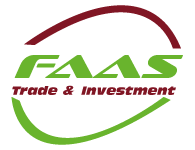Acacia Senegal (Gum Hashab) are crystallized nodules, that form on the Acacia Tree (a small thorny deciduous tree from the genus Acacia commonly found in Sudan) after the tree is tapped. These nodules vary from around 5-50mm+ in size, and are plucked by hand once dried.
Gum Hashab is used primarily in the food and beverage industry as an oil-in-water emulsion stabilizer. It is edible and also known as E414. Gum Hashab is used in pharmaceutical applications as a coating agent, adhesive and binding agent in various food applications. It also acts as a texturiser and evenly distributes the fat content in chocolate within the relevant applications. Hashab is also used in various industrial applications, including viscosity control in inks and in textile industries.
Gum Arabic is one of the most important agricultural exports in Sudan, with an estimated 5 million Sudanese farmers depending on the crop for their livelihood. The gum usually leaves the country in its raw, unprocessed form, as cleaned nodules in 25-50kg bags.
Gums are extracted from branches of acacia trees growing in Sudan’s southern Savannah.
The Hashab gum harvested started from mid-November. The first batches arrived at the auction markets from end December. Hashab gum supplies improved markedly in January as producers started to bring larger gum quantities to the auction market
Sudan’s total production is estimated to be around 25,000 MT per year.
-
- Gum Arabic HPS
- Product Specification Sheet Click Here
- Gum Arabic Kordofan
- Product Specification Sheet Click Here





